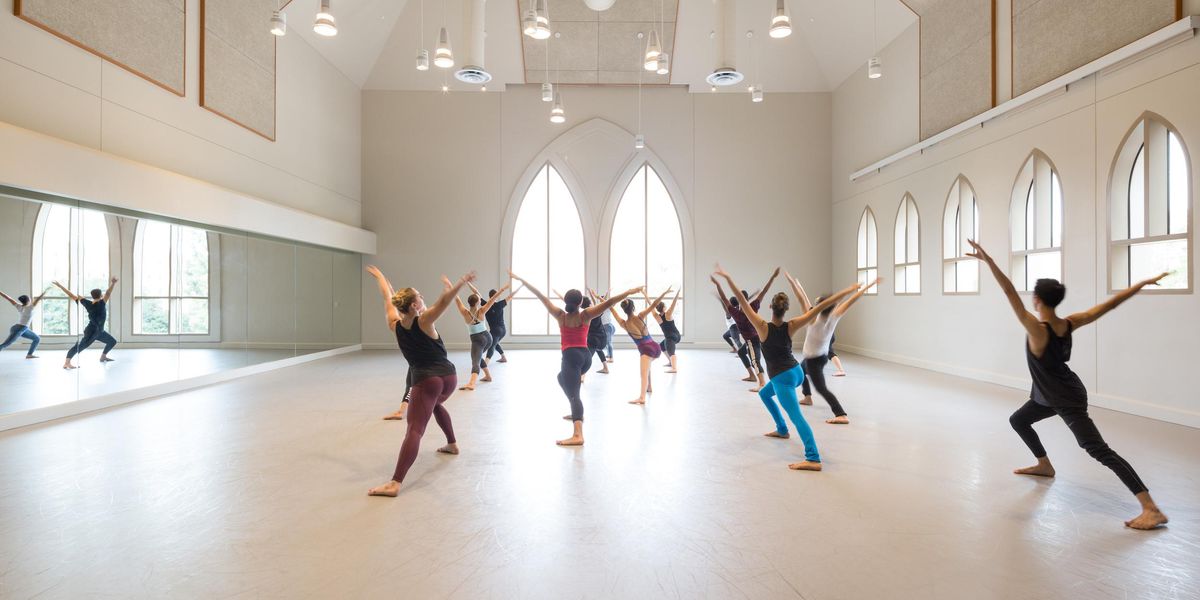Technique My Way: Michael Trusnovec
This stellar Taylor dancer tunes in to what his body is telling him.
At the Paul Taylor Dance Company’s first spring season at Lincoln Center, Michael Trusnovec, a company veteran of 14 years, shone as brightly as ever. In Taylor’s new Gossamer Gallants, a humorous exploration of insect behavior, Trusnovec’s whimsy made the audience giggle with delight. Later, standing amid a heap of bodies in Promethean Fire, he cut an almost mythic figure with his Grecian physique and heroic presence. As he moved through the weighted phrases, his body filled the striking shapes to exquisite completion, and his turns were a lesson in fierce spotting.
For Trusnovec, PTDC’s most senior member, the appeal of Taylor’s dances is multifaceted. “With Taylor, I found work that fit my body and the type of dancer I already was, having trained in modern, ballet, and jazz,” he says. “It’s the meeting point of sheer physicality that feels great on my personal musculature. That combined with the characters, acting, and emotional aspects—and how Paul Taylor ties the two together so well—is what drew me to his work.”
Just as he chose this choreography because it meshed with his natural ability, Trusnovec takes a similar approach to his training, conditioning, and maintenance. “I try to listen to my mood,” he says, “and work with my body instead of against it.”
Flexible Structure
The Long Island native, who trained at Southern Methodist University, relies on a regular regimen for both his rehearsal and performance days. But he also switches up certain aspects to keep his body and mind agile.
When he wakes up, Trusnovec fixes himself a smoothie with fruit, greens, and protein powder to kickstart the day. Three days a week, he follows this up with a short gym workout. “I try to include two sets of chest, back, bicep and tricep exercises, along with abs work for stamina. This sets up my joints and body for the large amount of partnering work we do,” he says. “However, I only work for 30 to 45 minutes. I don’t want to tire myself out.”
Before his five-hour rehearsal period, Trusnovec likes to take class with ballet teacher Zvi Gotheiner or at the Taylor school. “My class schedule depends entirely on how much energy I need to save for rehearsal,” he says. “I pay attention to what my body needs each day, and that can differ. I do a wide range of classes, especially when we are creating a new piece. That way my mind is expanded and I have something to contribute.”
Daily lunch always includes simple, easy-to-digest foods like a chicken breast, a piece of fruit, and a protein bar. And, just as his warm-up depends on his mood, so does his cool-down, when he stretches only the areas that request attention.
Show Time
On performance days, Trusnovec is more adamant about maintaining a consistent routine. “When I’m performing, especially in a longer run like Lincoln Center, each day needs to be exactly the same,” he says. “It allows me to know what to expect, and I don’t have to worry about unusual interferences in my dancing.”
This includes eating small things throughout the day. “If I eat too much before a show, my body doesn’t digest in time. But afterward, watch out!” He also takes care to stay on his gym schedule and do Pilates twice a week. “In performance you can get lopsided from dancing the same pieces. Going to the gym keeps me balanced.”
Before each show, Trusnovec completes company class or a barre, followed by yoga floorwork. Then he takes 20 to 30 minutes to raise his heart rate, which involves some nerve-settling cardio: “I jump and run laps right before I go onstage,” he says, “to burn off the extra adrenaline I have.”
Though Trusnovec tries to rest on his days off, he admits, “I like to be physical every day. I take yoga, ride my bike, go to the gym. I’m not very good at sitting still, so I put that extra energy into other activities.”
Unexpected Vacation
While Trusnovec has mostly avoided serious injury, a shoulder ailment took him offstage for three months in 2005. “I had tried for years to stave off a repair of the torn labrum in my shoulder socket, but finally I had to have it fixed surgically,” he says. “It was hard for me to not dance, but I tried to look at it as an opportunity. It was rare to have so much time in New York City. I went to museums, read entire books, sat in the park. It was rejuvenating.”
During the recovery process, Trusnovec worked with a physical therapist to “re-create the sensations and actions needed in Taylor’s pieces,” he says, so that he could feel secure when he returned to the stage.
Living Life
Just as he explored the city during his injury hiatus, Trusnovec enjoys his non-dance life as often as his dancing. This means indulging in a glass of wine after performances, seeing theater and dance shows, and allowing himself the occasional rich meal at a nice restaurant.
“I couldn’t dance Paul’s dances the way I do without having the balance of other input and stimuli,” he says. “That’s another reason it has been easy for me to stay with the company so long: The work keeps changing because I keep changing and experiencing new things to bring to my dance.”
Lauren Kay is a NYC dancer and writer.
Michael Trusnovec rehearses Paul Taylor’s
Roses with fellow PTDC dancer Eran Bugge. Photo by Matthew Murphy, Courtesy PTDC.




